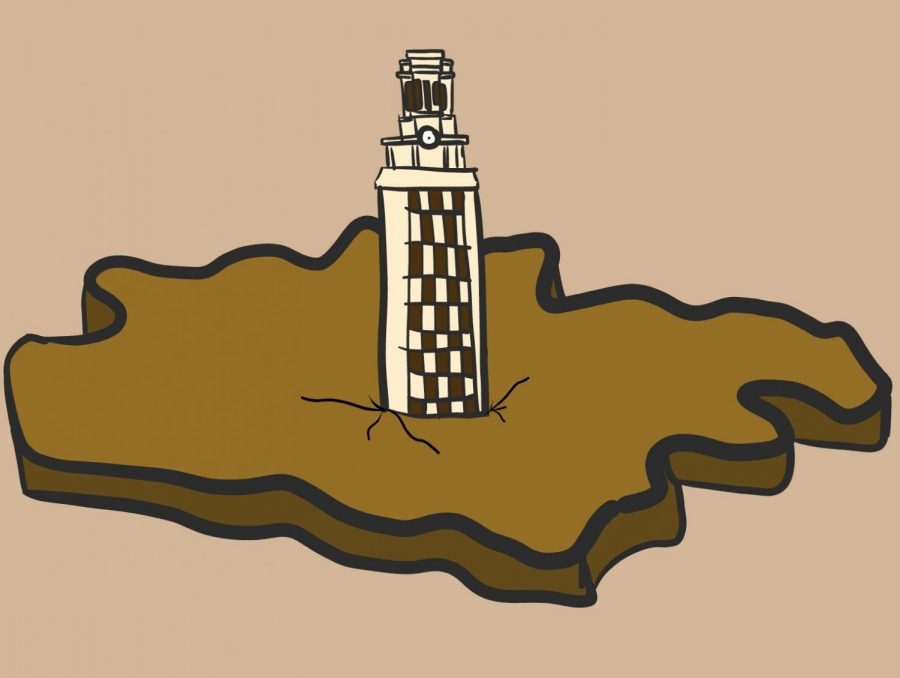UT must teach Texas’ Native American history
April 27, 2021
Despite residing on ancient land of the Indigenous peoples of Texas, UT has a history of burying this past. While many students and faculty have already chosen to recognize this history with a land acknowledgement, the erasure of Indigenous peoples’ history who lived on the UT campus land must be addressed by the University.
The first step the University must take to counter further erasure of Indigenous history is to both teach and publicly acknowledge the history of Indigenous peoples who lived on this land before us at new student orientation.
Advertising senior Kateri David, who is of Cherokee descent, explained that students should be taught more about the history of Indigenous peoples who lived on the Forty Acres by Indigenous students. Furthermore, she believes UT must do more to support Native American students.
“When stories are told by Native people and when tribal students are given a space to tell their stories, that’s generally a good thing,” David said. “It might come off as kind of performative if UT were to lead that. I feel like if they were to do something like that, it would be beneficial in getting those histories in front of people who normally wouldn’t seek it out, but I do think they need to back it up in terms of providing aid to Native students and building it into their required history curriculum.”
In order to help repair the history of mistreatment Indigenous peoples have faced through UT as an institution, UT must create and develop programs and curriculum that support Indigenous voices. It would be a valuable and important first step to begin teaching this history the moment students arrive at the Forty Acres.
Mariah Wade, an assistant professor in the department of anthropology, says it is a mistake not to teach students the history of Native Americans who lived in Texas.
“There’s absolutely no question about if it should be taught,” Wade said. “It’s important to understand that before there was a ‘Texas’ in any form or shape, there were Native Americans living and thriving in this general area. Not to understand their history is a great fault of ours.”
In better understanding the history of the land we live on, students will be able to engage in much-needed conversations and make the University a more welcoming space for students of Indigenous descent.
Kyle St. Nicholas, assistant director of New Student Services, said that while the orientation curriculum for this coming summer has already been decided, they are open to incorporating this information in future years.
“We are always looking to review new content, but our content is driven by our assessment of incoming students,” St. Nicholas said. “It is a lot of information already, so we try to focus on what the new students need to know at this time to prepare them for success moving forward.”
However, UT’s assessment should not only be driven by the body of incoming students, but the very body of land that this University was built on.
All UT students would benefit from knowing the Indigenous history of the Forty Acres, and creating a short video or presentation amplifying Indigenous voices would help raise this awareness.
There are many more conversations we need to have about the actions we can take to support Indigenous peoples, but UT can start by teaching the true history of the Forty Acres and creating spaces for Indigenous voices to tell their stories.
Purchatzke is a biochemistry freshman from Boerne, Texas.
Editor’s note: David was formerly on staff at The Daily Texan.












